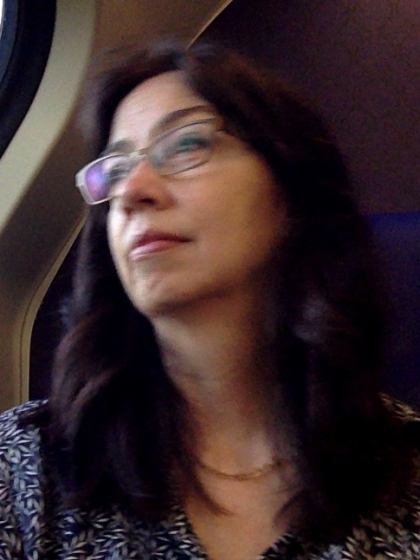C.G. (Christina) Williamson, Dr

Deep-mapping festival hubs
Project 1 of Connecting the Greeks. Multi-scalar festival networks in the Hellenistic world, NWO Open Competition 2019-2023
This project examines the local impact of festivals in the Hellenistic world, assessing them as an accelerant of community formation. This project aims to develop a method for analyzing public and festival spaces for multi-vocal involvement and interactivity between past and present. Questions addressed include: how did the increasingly global public impact ritual space and urban topography? How were festival sites shaped by their participants and spectators, and how did these ritual spaces in turn impact the mindsets of those who used them? Central concepts include place-making, spatial and network analysis, and deep-mapping; these will be applied to the festival spaces of Mylasa and the sanctuary of Zeus at Labraunda, and the Asklepieia on Kos and at Pergamon.
URL https://deepmappingsanctuaries.wordpress.com/
Connecting the Greeks. Multi-scalar festival networks in the Hellenistic world
NWO Open Competition 2019-2023 - co-director (with Prof.dr. O.M. van Nijf)
Festivals as at Olympia are widely considered crucial to the consolidation of the archaic Greek world. Yet the actual floruit of this festival culture occurred much later, in the wake of Alexander the Great (356-323 BCE) as cities old and new began organizing great festivals of their own, modelled on the traditional Panhellenic games, but with a new twist as they operated at multiple scales simultaneously: local, by consolidating the (new) citizenry of the polis; regional, by including surrounding cities in athletic competitions; and ‘global’, by forging links between cities across the expanded Greek world.
The overall aim of this project is to approach this spectacular rise of the agonistic culture not as a mere by-product of the expanding Greek world, but as an active force that constantly forged ties, linking this world together. We see these festivals and their games as key factors in the creation and maintenance of an imagined community of Greek cities within the Hellenistic world. They were central to the transformation of the small-scale, multi-polar world of the Greek city to a larger interconnected world dominated by vast territorial empires. In our hypothesis, these festivals formed networks of cooperation, critical to processes of ‘globalization’ observed in the Hellenistic era, paving the way for the Roman empire and the spread of Christianity.
Co-applicant with a research project and supervisory role in the overall project, with two PhD positions focusing on the regional and global levels respectively.
URL: https://connectingthegreeks.com/
Connected Contests
Festival networks in the ancient world
Digital Humanities Exploratory Project 2016-2018 - University of Groningen
with Prof.dr. O.M. van Nijf
Sport has become a global phenomenon that entangles politics, economics, mass media, and social networks. A similar globalising development occurred in antiquity with games at Olympia and elsewhere uniting the wider (Greek) world. In the Hellenistic and Roman eras (c.300 BC-300 AD) the number of festivals with global catchment areas rose, producing festival networks that was a major factor in the cultural and politcal integration of the Mediterranean world. Athletes and other performers were critical agents and are the focus of this project, which aims to
- compile a detailed database of individual athletes;
- prepare this data for use in network and spatial analyses;
- make this database accessible via internet.
The data is largely drawn from recondite documentary texts, available mainly to specialists. This project is innovative in that it turns this wide set of specialist data into an accessible and public tool for further studies and network analyses of athletes and their role in connecting the Mediterranean.
The project is planned for one year and will result in a robust database, website, and a peer-reviewed article. This pilot will be used for further research applications via NWO and ERC that will focus on the analytical component.
URL: http://connectedcontests.org/
Commanding Views
Monumental landscapes and the territorial formation of Pergamon, 3rd to 2nd centuries BC
NWO Rubicon Postdoctoral Research Grant - 2014-2015
Joukowsky Institute for Archaeology and the Ancient World Brown University, RI (USA)
PhD research 2012, University of Groningen
| Last modified: | 25 June 2022 1.14 p.m. |
